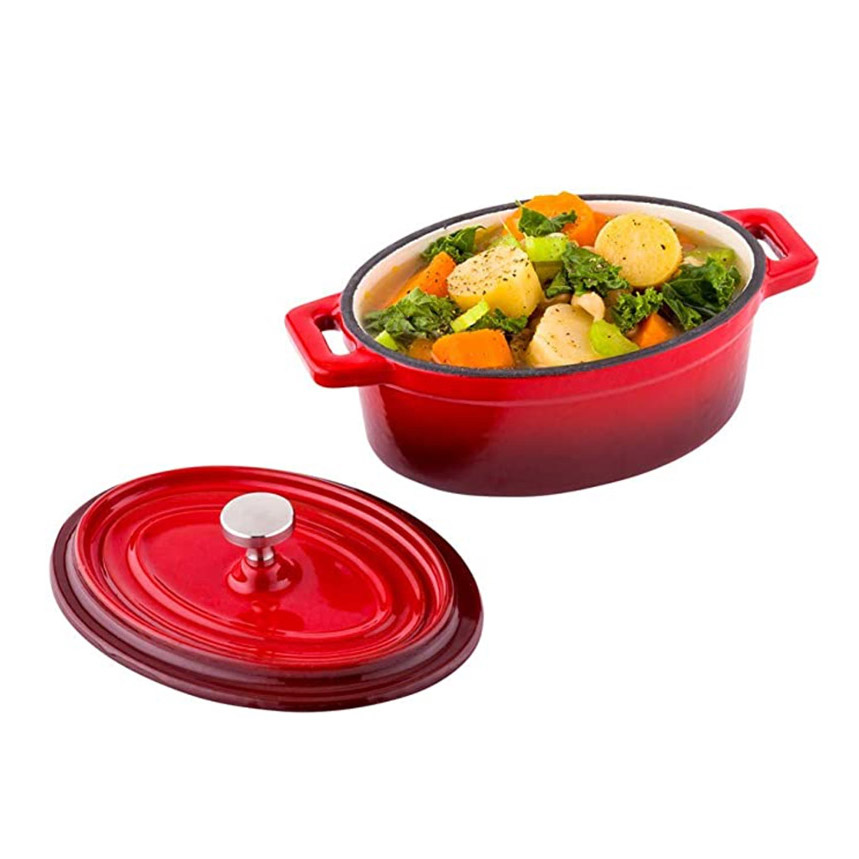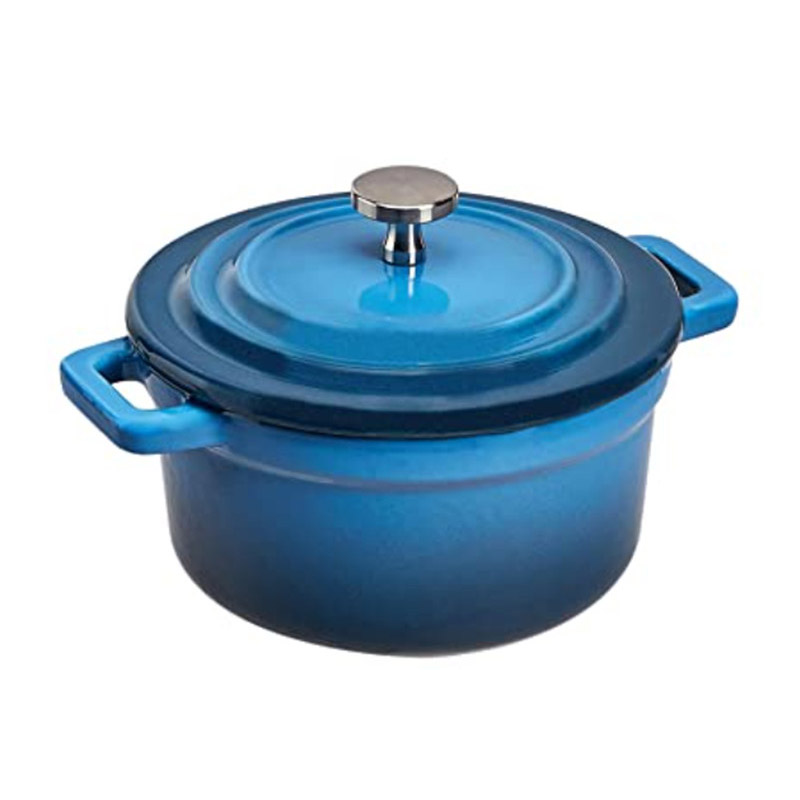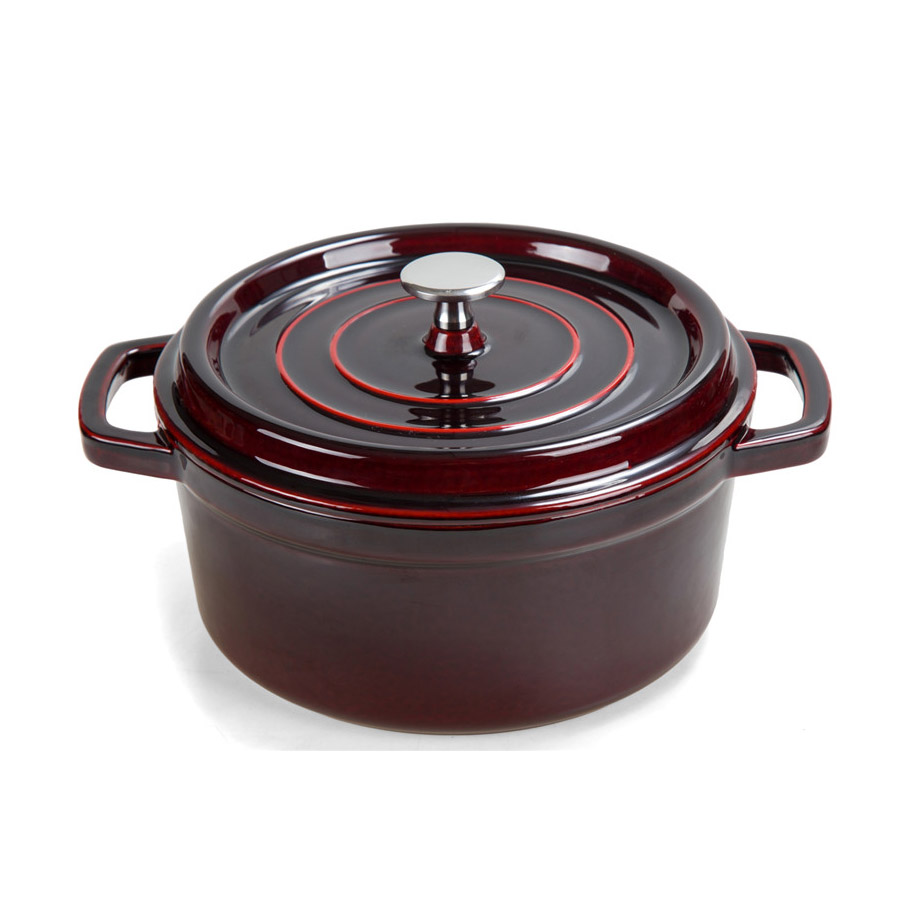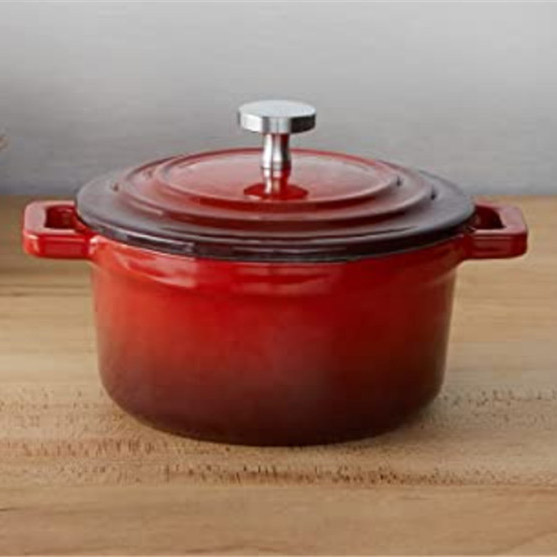- 150m Southwards, West DingWei Road, Nanlou Village, Changan Town, GaoCheng Area, Shijiazhuang, HeBei, China
- monica@foundryasia.com
Aug . 07, 2025 01:20 Back to list
Best Cast Iron Skillet for Outdoor Grill & Indoor Cooking
Industry Trends: The Resurgence of Cast Iron in Outdoor Culinary Spaces
The allure of outdoor cooking has never been stronger, driven by a global appreciation for open-air dining, camping, and backyard BBQs. Amidst this trend, the demand for durable, versatile, and high-performance cookware has surged. Enter cast iron – a material that has witnessed a remarkable resurgence, particularly in the realm of outdoor grilling. Consumers are increasingly seeking alternatives to lightweight, short-lived cookware, gravitating towards the longevity and superior cooking properties offered by cast iron.
According to a report by Grand View Research, the global outdoor cooking equipment market size was valued at USD 6.5 billion in 2022 and is expected to grow at a compound annual growth rate (CAGR) of 6.2% from 2023 to 2030. Within this booming market, cast iron products, particularly the **best cast iron skillet for outdoor grill**, are gaining significant traction due to their unmatched heat retention, durability, and ability to impart a unique flavor profile to food.
This trend extends beyond traditional grilling, embracing diverse cooking methods like simmering stews, baking bread, and even crafting innovative dishes such as upside down pizza in cast iron skillet directly over open flames or charcoal. The versatility of cast iron also makes it a popular choice for indoor use, with many consumers utilizing a cast iron griddle for induction cooktop or a cast iron skillet for induction cooktop, showcasing its adaptability across different heat sources. Even for those with electric stoves, mastering cooking with cast iron on electric stove has become a sought-after skill, debunking myths about its compatibility with modern kitchen setups, including using cast iron skillet on glass top stove.

Technical Parameters & Advantages: Why Cast Iron Reigns Supreme
When considering the **best cast iron skillet for outdoor grill**, understanding its inherent technical parameters is crucial. Cast iron cookware, primarily made from an iron alloy with a carbon content greater than 2%, offers distinct advantages:
- Superior Heat Retention and Distribution: Cast iron boasts exceptional thermal mass, meaning it absorbs and retains heat remarkably well. This ensures even heat distribution across the cooking surface, eliminating hot spots and providing consistent cooking results, essential for searing meats or achieving a perfect crust on bread outdoors.
- Durability and Longevity: Unlike many modern non-stick coatings that degrade over time, a properly maintained cast iron skillet can last for generations. Its robust nature makes it ideal for the rigors of outdoor use, resisting warping and damage from high temperatures or rough handling.
- Natural Non-Stick Surface (Patina): With proper seasoning – a process of baking thin layers of oil onto the surface – cast iron develops a natural, chemical-free non-stick patina that improves with every use. This is a significant advantage over synthetic coatings, which can scratch and release harmful chemicals. For new users, understanding pre seasoned cast iron skillet first use is key to establishing this durable surface.
- Versatility Across Heat Sources: From open campfires, charcoal grills, and wood-fired ovens to induction cooktops, electric stoves, and even glass top stoves, cast iron adapts seamlessly. This makes it an incredibly versatile piece of cookware for any outdoor enthusiast or home chef.
- Enrichment of Food Flavor: The seasoning on cast iron imparts a unique, subtle richness to food, often described as a deeper, more robust flavor, especially noticeable in grilled dishes.
- Health Benefits: Cooking with cast iron can leach small amounts of dietary iron into food, contributing to iron intake, which can be beneficial for those with iron deficiencies.
Variations in Cast Iron Cookware:
While traditional pre-seasoned cast iron is king for outdoor grilling, other variations cater to different needs:
- Pre-Seasoned Cast Iron: Ready to use out of the box after a quick rinse, these skillets come with an initial layer of seasoning, making pre seasoned cast iron skillet first use straightforward. This is often the primary choice for the **best cast iron skillet for outdoor grill** due to its ruggedness and performance.
- Enamelled Cast Iron: Featuring a vitreous enamel glaze, these skillets offer easier cleaning and do not require seasoning. While excellent for indoor use and acidic foods, the enamel can chip if exposed to direct, uncontrolled flames or extreme thermal shock, making traditional cast iron often preferred for intense outdoor grilling environments. Some brands offer light weight nonstick cast iron enameled skillet options, balancing non-stick properties with reduced weight.
- Lightweight Cast Iron: Manufacturers are innovating to produce light weight nonstick cast iron skillet options, achieved through thinner castings or different alloys, making them easier to handle for some users without significantly compromising performance.

The Art and Science Behind the **Best Cast Iron Skillet for Outdoor Grill** Production
Creating a high-quality cast iron skillet, such as those that become the **best cast iron skillet for outdoor grill**, is a meticulous process rooted in centuries-old metallurgy combined with modern precision engineering. At FoundryAsia, our commitment to excellence ensures every piece, including our popular Cast Iron Mini Cocotte, meets rigorous standards. The primary manufacturing process is casting, followed by finishing and seasoning.
Core Material: High-Grade Iron Alloy
The foundation of any superior cast iron product lies in its raw material. We utilize a carefully selected iron alloy, typically comprising iron, carbon (2-4%), silicon (1-3%), and trace elements like manganese and sulfur. This specific composition ensures optimal molten flow for intricate molds, excellent heat retention, and durability in the final product. Material inspection and analysis are conducted rigorously to meet internal and international standards like ASTM A48 (for Gray Iron Castings) or ASTM A536 (for Ductile Iron Castings).
Detailed Manufacturing Process: From Raw Material to Finished Product
1. Pattern Making & Mold Creation
High-precision patterns (models of the final product) are created using CAD software and CNC machining. These patterns are then used to form sand molds. Green sand molding is common, where a mixture of sand, clay, and water is compacted around the pattern to create the impression. For larger or more complex pieces, shell molding or permanent mold casting might be employed. Each mold is designed to ensure dimensional accuracy and a smooth surface finish for the eventual cast iron skillet.
2. Melting & Pouring
Scrap iron, pig iron, and alloying elements are melted in a high-temperature furnace (cupola, electric arc, or induction furnace) until molten. The molten iron, reaching temperatures of around 1400-1500°C (2550-2730°F), is then carefully poured into the prepared sand molds. Precision in temperature control and pouring speed is critical to prevent defects like cold shuts or gas porosity. This step is where the fundamental form of the **best cast iron skillet for outdoor grill** begins to take shape.
3. Cooling & Solidification
Once poured, the molten iron is allowed to cool and solidify within the mold. The cooling rate influences the microstructure of the iron, affecting its final strength and malleability. This controlled cooling prevents internal stresses and ensures a uniform crystalline structure.
4. Shakeout & Fettling
After solidification, the sand mold is broken apart (shakeout) to reveal the raw cast iron product. The casting then undergoes fettling, which involves removing excess material such as risers (feeders for molten metal), runners (channels for molten metal), and any flashing (thin fins of metal where mold halves meet) through grinding, chipping, or shot blasting. This prepares the surface for subsequent finishing.
5. Machining & Finishing
Some cast iron skillets require additional machining for flatness of the cooking surface or precise handle attachment points. CNC machining ensures exact dimensions and a smooth finish. The surface is then often shot-blasted again to create a textured finish, ideal for seasoning adhesion. This stage refines the physical attributes, contributing to the skillet's performance as the **best cast iron skillet for outdoor grill**.
6. Seasoning
For non-enameled cast iron, a critical step is pre-seasoning. This involves applying thin layers of food-grade oil (such as vegetable oil or flaxseed oil) and baking the skillet at high temperatures. This process polymerizes the oil, creating a durable, non-stick, rust-resistant layer (patina). Multiple layers are typically applied to ensure a robust initial seasoning, preparing the skillet for its pre seasoned cast iron skillet first use.
7. Quality Control & Packaging
Throughout the entire process, stringent quality control measures are implemented. This includes visual inspections for surface defects, dimensional checks, hardness testing, and sometimes even metallurgical analysis. Products are tested for conformity to standards like ISO 9001 for quality management and ANSI standards for product performance and safety. Only after passing all checks is the skillet cleaned, inspected one final time, and carefully packaged for shipping. This ensures an average lifespan of decades, often generations, under proper care.

Application Scenarios & Case Studies: Where the **Best Cast Iron Skillet for Outdoor Grill** Shines
The versatility of a well-made cast iron skillet makes it an indispensable tool for a myriad of outdoor cooking adventures and beyond. Its robust nature and superior heat characteristics make it the go-to choice for gourmet outdoor meals.
Typical Outdoor Applications:
- Campfire Cooking: Whether direct on coals or hanging over an open flame, the **best cast iron skillet for outdoor grill** excels at searing steaks, frying bacon and eggs, or simmering hearty stews during camping trips. Its ability to handle extreme temperatures without warping is paramount here.
- Backyard BBQs & Grilling: Elevate your backyard grilling. Use a cast iron skillet directly on your grill grates to cook smaller vegetables that might fall through, achieve a perfect crust on smash burgers, or even bake cornbread as a side dish. The skillet retains heat even after being removed from the direct flame, keeping food warm.
- Tailgating & Picnics: Portable and durable, a seasoned cast iron skillet can be easily transported for tailgating events, allowing for hot, freshly prepared food right at the game or picnic spot.
- Pizza Perfection: For the adventurous, try an upside down pizza in cast iron skillet. By preheating the skillet upside down on a grill, then flipping it and assembling your pizza, you can achieve a crispy crust reminiscent of a brick oven, all outdoors.
Beyond the Grill: Indoor Compatibility
The adaptability of cast iron means your outdoor skillet is just as valuable indoors:
- Induction Cooktops: The ferromagnetic properties of cast iron make it perfectly compatible with induction cooktops. A cast iron griddle for induction cooktop or a cast iron skillet for induction cooktop heats quickly and efficiently, making it a powerful tool for modern kitchens.
- Electric Stoves: Many wonder about cooking with cast iron on electric stove. It works exceptionally well. The flat bottom of a good quality cast iron skillet makes excellent contact with electric coils or ceramic surfaces, ensuring efficient heat transfer.
- Glass Top Stoves: While care is needed to avoid scratching, using cast iron skillet on glass top stove is entirely feasible. The key is to lift rather than drag the skillet and ensure the bottom is smooth and clean.

Case Study: Restaurant Chain Adopts Cast Iron for Signature Dishes
A national restaurant chain specializing in rustic American cuisine faced challenges with inconsistent searing and frequent replacement of non-stick pans for their signature grilled dishes. After extensive trials, they standardized on a specific model of **best cast iron skillet for outdoor grill** from a reputable manufacturer (similar to FoundryAsia's production standards). This led to:
- Improved Food Quality: Consistent, high-quality searing and browning for steaks and burgers due to superior heat retention.
- Significant Cost Savings: Pan replacement frequency dropped by over 80% annually, leading to substantial savings on equipment procurement.
- Enhanced Sustainability: Reduced waste from disposable non-stick pans, aligning with their corporate sustainability goals.
- Customer Satisfaction: Positive feedback on the deeper flavors and better texture of grilled items, contributing to repeat business.
This illustrates the advantage of robust, durable cookware in high-demand environments. Our manufacturing expertise, applied to products like the Cast Iron Mini Cocotte, ensures the same level of quality and performance across our entire cast iron range, whether it's for individual home use or large-scale commercial applications in industries like food service and hospitality where durability and cooking performance are paramount.

Choosing the **Best Cast Iron Skillet for Outdoor Grill**: A Manufacturer Comparison
With numerous manufacturers in the market, selecting the **best cast iron skillet for outdoor grill** requires careful consideration. While specific brand names are often discussed, focusing on key manufacturing attributes and industry standards is more critical. Below is a comparative overview of what defines a top-tier cast iron skillet manufacturer, contrasted with typical market offerings.
Key Differentiators in Cast Iron Skillet Manufacturing
| Feature/Attribute | Premium Manufacturer (e.g., FoundryAsia Standards) | Standard Market Offering |
|---|---|---|
| Material Grade | High-purity, virgin iron with controlled carbon and silicon content (e.g., ASTM A48 Class 30/35 for tensile strength), ensuring optimal thermal properties and reduced impurities. | Often uses recycled scrap metal without strict impurity control, leading to potential hot spots or brittleness. |
| Casting Precision | Advanced sand molding techniques (e.g., automated molding lines) and CNC machining for precise dimensions, uniform wall thickness, and perfectly flat cooking surfaces, crucial for even heating and stability on grills or flat cooktops. | Less precise molding, potential for inconsistent wall thickness, warping, or uneven surfaces, leading to unstable cooking or cold spots. |
| Surface Finish & Seasoning Quality | Multi-layer, oven-baked pre-seasoning using high-quality, food-grade oils. Surface meticulously prepped (e.g., shot-blasted) for optimal seasoning adhesion, resulting in a durable, ready-to-use non-stick surface. Matty Matheson cookware cast iron skillet lines often exemplify this commitment to superior seasoning. | Single-layer or thin seasoning, prone to flaking or rust. Less attention to surface preparation, requiring extensive pre seasoned cast iron skillet first use and immediate re-seasoning by the user. |
| Quality Control & Certifications | Adherence to international standards such as ISO 9001:2015 for quality management systems. Regular testing for material composition, hardness, dimensional accuracy, and food safety (e.g., FDA compliance for cookware materials). Full traceability of batches. | Minimal or no internationally recognized certifications. Quality checks may be basic or inconsistent, leading to higher defect rates. |
| Handle Ergonomics & Design | Thoughtful design considering balance, grip, and heat dissipation for comfortable and safe handling, even with oven mitts or gloves. Integrated assist handles for heavy skillets. | Basic handle designs, often unbalanced or uncomfortable, prone to overheating. |
| Longevity & Warranty | Designed for multi-generational use with proper care. Backed by extensive warranties (e.g., limited lifetime warranty) reflecting confidence in product durability. | Shorter product lifespan expectations, minimal or limited warranties. |
Choosing a manufacturer with a proven track record, strict quality control, and adherence to international standards like FoundryAsia is paramount. Our expertise, whether crafting a heavy-duty skillet or a delicate Cast Iron Mini Cocotte, translates into products that perform reliably and last for decades, becoming the true **best cast iron skillet for outdoor grill** in your arsenal.

Custom Solutions & OEM/ODM Partnerships
For businesses, culinary brands, or specialized industries seeking unique cast iron cookware, custom manufacturing offers unparalleled opportunities. FoundryAsia specializes in providing tailored OEM (Original Equipment Manufacturer) and ODM (Original Design Manufacturer) services for cast iron products, ranging from specialized skillets designed as the **best cast iron skillet for outdoor grill** for specific cooking tasks to bespoke cookware sets.
Our custom solutions process is comprehensive:
- Concept & Design Consultation: We work closely with clients to refine their ideas, offering expertise in material selection, structural integrity, and ergonomic design. Whether it's a unique handle design or specific dimensional requirements for a restaurant chain, our engineering team provides detailed CAD drawings and 3D renderings.
- Prototyping & Tooling: Once the design is approved, we proceed with prototype creation and tooling (mold) development. This stage ensures that the physical product matches the digital design and performs as intended.
- Precision Manufacturing: Leveraging our advanced casting facilities and stringent quality control, we produce custom cast iron cookware in desired quantities. Our capabilities include diverse finishes, specialized pre-seasoning, and custom branding/logo integration.
- Quality Assurance: Every custom product undergoes the same rigorous inspection protocols as our standard lines, including dimensional checks, surface finish inspection, and performance testing, ensuring compliance with client specifications and international standards (ISO, ANSI).
- Logistics & Delivery: We manage the entire supply chain, from manufacturing to packaging and global shipping, ensuring timely and secure delivery of custom orders.
This bespoke approach allows brands to introduce unique products to the market, catering to niche demands or creating signature cookware lines that stand out. For example, a client looking for a unique camping skillet with integrated features for open-fire cooking could leverage our expertise to develop a truly differentiated **best cast iron skillet for outdoor grill** tailored precisely to their vision.

Comparative Analysis: Popular **Best Cast Iron Skillet for Outdoor Grill** Models
To further illustrate the parameters that define the **best cast iron skillet for outdoor grill**, here's a comparative table featuring various aspects one might consider. These are generalized examples, as product specifications vary widely among brands.
| Feature | Model A (Premium) | Model B (Mid-Range) | Model C (Entry-Level) |
|---|---|---|---|
| Diameter | 12 inches (30.5 cm) | 10 inches (25.4 cm) | 8 inches (20.3 cm) |
| Weight (Approx.) | 7.5 lbs (3.4 kg) | 5.0 lbs (2.3 kg) | 3.5 lbs (1.6 kg) |
| Wall Thickness | 4.5 mm | 3.8 mm | 3.0 mm |
| Pre-Seasoning Layers | 3-5 layers of plant-based oil | 1-2 layers of vegetable oil | Minimal/Required re-seasoning |
| Handle Ergonomics | Integrated, elongated, ergonomic with assist handle; heat-dissipating design | Standard integrated handle with small assist handle | Basic short integrated handle |
| Surface Finish (Fettling) | Smooth, ground cooking surface; machine finished | Rough, sand-cast texture | Very rough, often uneven |
| Max Oven/Grill Temp. | 700°F (370°C) - No limit for cast iron itself, limited by seasoning breakdown | 500°F (260°C) - Similar, depends on seasoning | 450°F (232°C) - Similar, depends on seasoning |
| Induction Compatibility | Fully compatible | Fully compatible | Fully compatible |
| Approx. Price Range | $60 - $120+ | $30 - $60 | $20 - $30 |
| Warranty | Limited Lifetime | 5-10 Year Limited | 1 Year Limited |
This table highlights that while all cast iron skillets offer inherent benefits, the "best" choice often comes down to the manufacturer's attention to detail, material quality, and finishing processes, which directly impact heat performance, durability, and user experience. A lightweight nonstick cast iron skillet might trade some thermal mass for ease of handling, for instance.

Ensuring Trust & Authority: FoundryAsia's Commitment
At FoundryAsia, our commitment to excellence is deeply rooted in the Google EEAT (Expertise, Experience, Authoritativeness, Trustworthiness) framework. We believe that true quality transcends mere specifications; it encompasses a holistic approach to manufacturing, customer service, and industry leadership.
Expertise: Deep Understanding & Professional Knowledge
Our team comprises seasoned metallurgists, engineers, and manufacturing specialists with decades of collective experience in casting technologies. We speak the language of the industry, understanding the nuances of "grey iron casting" (a common form of cast iron), "thermal shock resistance" vital for outdoor grilling, and the science behind a perfect "polymerized oil layer" for non-stick seasoning. Our internal R&D continually explores advanced materials and production methods to ensure our products, from a custom-designed **best cast iron skillet for outdoor grill** to a Cast Iron Mini Cocotte, are at the forefront of performance and durability.
Experience: Practical Application & Client Success
We don't just manufacture; we understand how our products are used in real-world scenarios. Through years of working with global clients, including renowned culinary brands and hospitality groups, we've gathered invaluable insights. Our cast iron skillets have been tested in diverse environments, from professional kitchens to rugged outdoor expeditions. We've received feedback on their performance for cooking with cast iron on electric stove, effectiveness as a cast iron griddle for induction cooktop, and durability when using cast iron skillet on glass top stove. This practical experience informs every design and manufacturing decision, ensuring our products stand up to the demands of everyday use.

Authoritativeness: Industry Recognition & Credibility
FoundryAsia's authority in the cast iron manufacturing sector is built on:
- Certifications: We operate under ISO 9001:2015 quality management systems, ensuring consistent quality and continuous improvement. Our products adhere to relevant ANSI (American National Standards Institute) standards for cookware safety and performance, and where applicable, FDA (Food and Drug Administration) guidelines for food contact materials.
- Long-Standing Partnerships: Over X years (e.g., "over 20 years") in the industry, we have fostered strong relationships with leading brands globally, serving as their trusted OEM/ODM partner.
- Published Research & Industry Contributions: Our engineers frequently contribute to industry discussions and best practices, further solidifying our position as thought leaders in metal casting.
Trustworthiness: Transparency & Customer Support
We foster trust through transparent operations and unwavering customer support:
- Clear Delivery Cycles: We provide realistic and consistent delivery schedules, from initial design to final shipment, facilitated by robust supply chain management. Typically, custom orders have a lead time of 8-12 weeks for tooling and first article inspection, followed by 4-6 weeks for mass production.
- Comprehensive Quality Assurance: Every product undergoes multi-stage quality checks, and we provide detailed inspection reports upon request. Our low defect rates are a testament to our commitment.
- Robust Warranty & After-Sales Support: We stand behind our products with a comprehensive warranty (e.g., a 10-year limited warranty against manufacturing defects for our core cast iron products). Our dedicated customer support team is available to address any inquiries, from pre seasoned cast iron skillet first use advice to troubleshooting.
- Client Testimonials: We are proud to share feedback from satisfied clients who have experienced our product quality and service excellence firsthand.
Frequently Asked Questions (FAQ) about Cast Iron Cookware
References & Further Reading
For more in-depth information on metallurgy, outdoor cooking, and cast iron care, consider consulting the following resources:
- Journal of Materials Science & Technology: Provides academic insights into the properties and processing of metal alloys, including cast iron. Link to Journal
- Outdoor Cooking & Camping Forums: Practical tips and community discussions on maximizing your outdoor culinary experience with cast iron. Example Forum Link (Illustrative)
- Lodge Cast Iron Official Resources: A prominent manufacturer with extensive guides on seasoning, care, and use of cast iron cookware. Link to Lodge Discover Section
- Wikipedia - Cast Iron Cookware: A comprehensive overview of the history, properties, and usage of cast iron cookware. Link to Wikipedia
This is the last article
-
Best Cast Iron Skillet for Outdoor Grill & Indoor Cooking
NewsAug.07,2025
-
Best Cast Iron Skillet for Grill, Stove & Induction
NewsAug.06,2025
-
Pre-Seasoned Cast Iron Cookware: Durable & Non-Stick
NewsAug.05,2025
-
Lightweight Nonstick Enameled Cast Iron Skillet | Perfect Kitchen Essential
NewsAug.04,2025
-
Lightweight Nonstick Enameled Cast Iron Skillet - Healthy Cooking
NewsAug.03,2025
-
Premium 2 Quart Enameled Cast Iron Dutch Oven | AI-Enhanced
NewsAug.02,2025